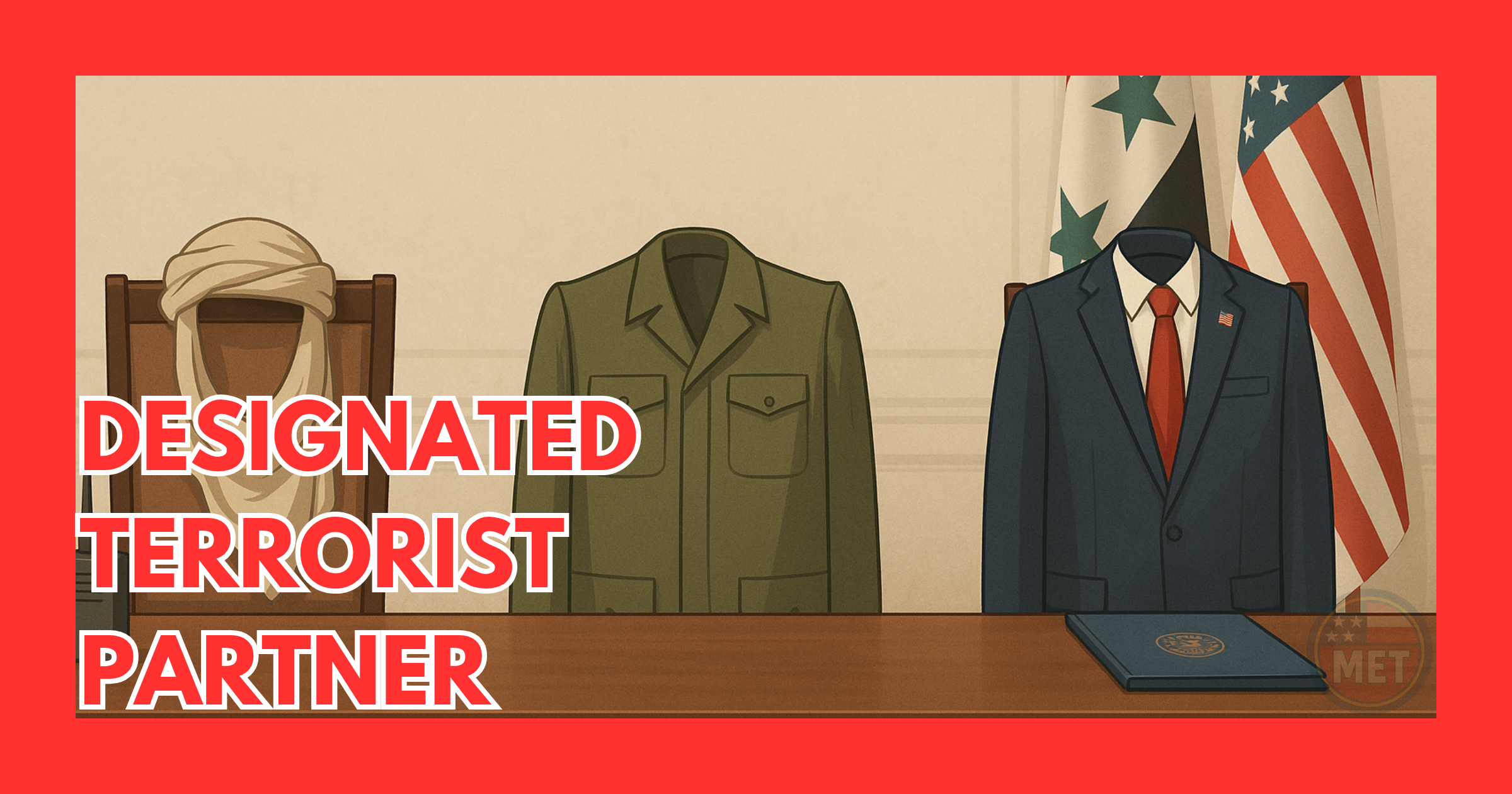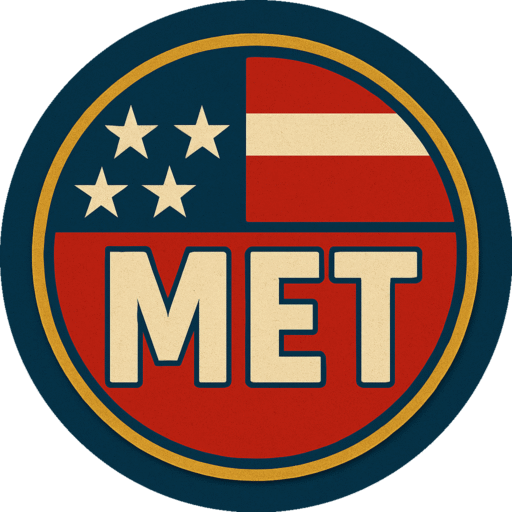
Ahmed al-Sharaa: From Insurgent to Head of State
As President Trump lifts sanctions and reopens diplomatic channels with Syria, the spotlight turns to a leader once tied to a U.S.-designated terrorist group with roots in al-Qaeda.
by Met Middleson
June 1, 2025
The world’s attention turned to Ahmed al-Sharaa as the United States formally lifted all remaining sanctions on Syria. The announcement came during President Trump’s visit to Riyadh, where he met directly with Sharaa, now recognized as Syria’s interim president. For many, the policy shift marks a new chapter in U.S. engagement. For others, it raises an older question: can a man formerly tied to a terrorist organization be trusted with rebuilding a state?
Ties to Designated Terrorist Groups
Ahmed al-Sharaa rose to prominence during the Syrian civil war as a senior figure within Hay’at Tahrir al-Sham (HTS), a coalition of Islamist rebel groups formed in 2017. HTS emerged from factions that included Jabhat al-Nusra, which served as al-Qaeda’s official affiliate in Syria for several years. Though HTS later claimed to sever formal ties with al-Qaeda, both the U.S. government and the United Nations have continued to classify it as a terrorist organization with deep leadership and operational links to al-Qaeda’s regional network.
Sharaa was identified in multiple intelligence reports between 2017 and 2021 as a commander and political coordinator within HTS, operating primarily in Idlib province. His involvement in the group during its most militant phase remains part of his public record. In recent years, he has sought to distance himself from the group’s past affiliations, presenting himself as a nationalist figure focused on governance rather than ideology.
A Power Vacuum and a New Face
Following years of attrition and shifting alliances, the Assad regime lost control of key territories in late 2024. Internal defections, economic collapse, and the withdrawal of Russian military support created the opening for a transitional arrangement. A provisional governing council was formed under regional pressure. Sharaa, with support from several tribal leaders and former opposition blocs, emerged as the consensus figure to lead it.
In January 2025, he was formally declared interim president. His government has since focused on restoring electricity and water access, reopening border trade, and drafting a new constitutional framework with support from Arab League mediators.
A U.S. Reintroduction to Syria
President Trump’s May 13 visit to Riyadh marked the first direct meeting between a sitting U.S. president and a Syrian leader since the start of the war. Speaking alongside Gulf partners, Trump announced the lifting of all U.S. sanctions on Syria and praised Sharaa’s leadership as “committed to stability, to rebuilding, and to peace.”
The decision was met with swift implementation. The U.S. Treasury issued General License 25 to permit trade and investment, and the State Department granted a six-month waiver under the Caesar Syria Civilian Protection Act. While no formal security agreement was signed, officials described the move as “a first step in a long process.”
International Response: Skepticism and Strategy
France and Germany released cautious statements questioning the legitimacy of a transitional government led by a former militant. Russia, long allied with the Assad regime, acknowledged the power shift but withheld endorsement. Iran has made no official comment.
In contrast, Saudi Arabia and the UAE welcomed the U.S. announcement, emphasizing Sharaa’s role in preventing further Iranian influence in western Syria. Jordan, Egypt, and Turkey have begun bilateral talks with Damascus under Sharaa’s leadership.
The Path Forward
The reintroduction of Syria into formal diplomatic channels presents new opportunities for reconstruction and reintegration. Yet questions about Sharaa’s past remain unresolved. The balance between pragmatism and principle will shape how the international community engages in the months ahead.
As Syria reopens for business and diplomacy, trust may prove harder to restore than infrastructure.



